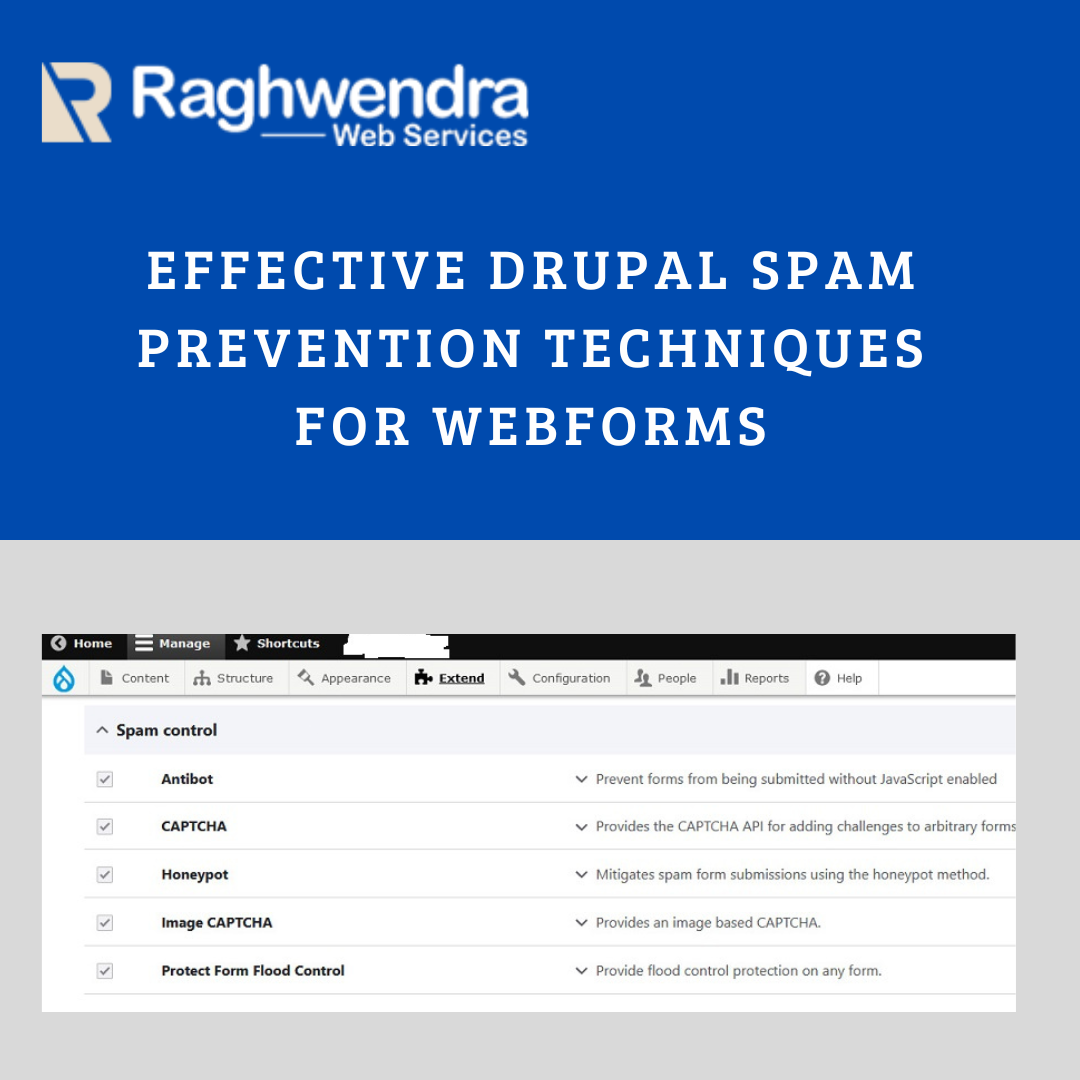
Spam remains an adding challenge for Drupal 10 web developers. There are several powerful modules available to combat spam in Drupal webforms. In this article, we will explore some popular Drupal modules, including Spammaster, Honeypot, Antibot, reCAPTCHA, and Protect Form Flood Control. By combining these modules and implementing best practices, you can fortify your Drupal webforms and ensure a spam-free user experience.
Spammaster Module :
Article Contents
Spammaster is a versatile Drupal module that uses multiple spam detection techniques to filter out unwanted submissions. The Spammaster module is a popular spam prevention module in Drupal that helps secure forms and block spam submissions. It provides a range of anti-spam measures and techniques to detect and prevent spam submissions, including form submissions from spam bots.
The Spammaster module integrates with various spam detection services and technologies, such as reCAPTCHA, Honeypot, and Akismet. These services help analyze and identify spam submissions based on factors like IP reputation, known spam patterns, and user behavior.
Honeypot :
Honeypot is a lightweight and effective Drupal module that adds hidden form fields to webforms. These fields are invisible to human users but are filled in by spam bots. When these fields are detected as filled, the submission is considered spam.
Honeypot acts as a preventing spam submissions without bothering accurate users with CAPTCHA challenges.Implement the Honeypot technique.
The Honeypot technique involves adding hidden fields that only spam bots would fill, helping to identify and block them.
Antibot:
Antibot is another useful Drupal module that utilizes JavaScript-based techniques to detect and block automated bots. It adds a simple question to the webform that is easy for humans to answer but challenging for bots.
For example, it may ask users to perform a simple calculation or choose the correct image from a set of options. By distinguishing between human and bot behavior, Antibot effectively thwarts spam attacks.
Configuring Antibot settings for optimal protection.
Explore the configurable options within the AntiBot module to customize its behavior and effectiveness.
We can use that Anti Bot, and we have to javascript enabled in a given form.
To Specify the form IDs that you want to protect by Antibot. Give the Form ID like.
“User_login_form” , “user_register_form”.
Now save configuration and clear the cache.
Google reCAPTCHA :
reCAPTCHA is a widely recognized and powerful spam prevention tool provided by Google. The Drupal module integrates reCAPTCHA’s advanced capabilities into your webforms.
It uses complex challenges, such as image recognition or checkbox verification, to differentiate between human users and bots. With reCAPTCHA, you can add an extra layer of security to your forms and ensure that only genuine submissions are accepted.
Protect Form Flood Control:
Form flood attacks involve overwhelming your webforms with a high volume of submissions, often originating from automated scripts. Protect Form Flood Control is a Drupal module that prevents such attacks by implementing limits on the number of form submissions within a specific timeframe.
Submission limits restrict the number of form submissions allowed within a specified period. This prevents spammers from overwhelming forms with excessive submissions. Time-based restrictions complement submission limits by preventing multiple submissions within a specific timeframe, such as one submission per hour or per day.
Conclusion:
By utilizing a combination of Drupal modules such as Spammaster, Honeypot, Antibot, reCAPTCHA, and Protect Form Flood Control, you can implement a robust spam prevention strategy.
Each module brings its unique features and techniques to the table, collectively forming a comprehensive defend spam attacks. However, it’s essential to strike a balance between security measures and user experience, ensuring that genuine users can submit forms effortlessly while spam submissions are effectively filtered out. By following best practices and regularly updating your spam prevention modules, you can enhance the overall security of your Drupal webforms and provide a smooth user experience for your visitors.
![Insert, Update, Delete in PHP MySQL example [GIT downloads] Insert, Update, Delete in PHP MySQL example [GIT downloads]](https://www.raghwendra.com/blog/wp-content/uploads/2021/10/header-post-blog-150x150.jpg)
![15 Things to consider when redesigning [revamp] a website website redesign services](https://www.raghwendra.com/blog/wp-content/uploads/2023/06/redesign-coporate-identity-150x150.jpg)

![What comes under the best
WordPress [wp] web care plan? wordpress](https://www.raghwendra.com/blog/wp-content/uploads/2013/05/Wordpress_alt.png)